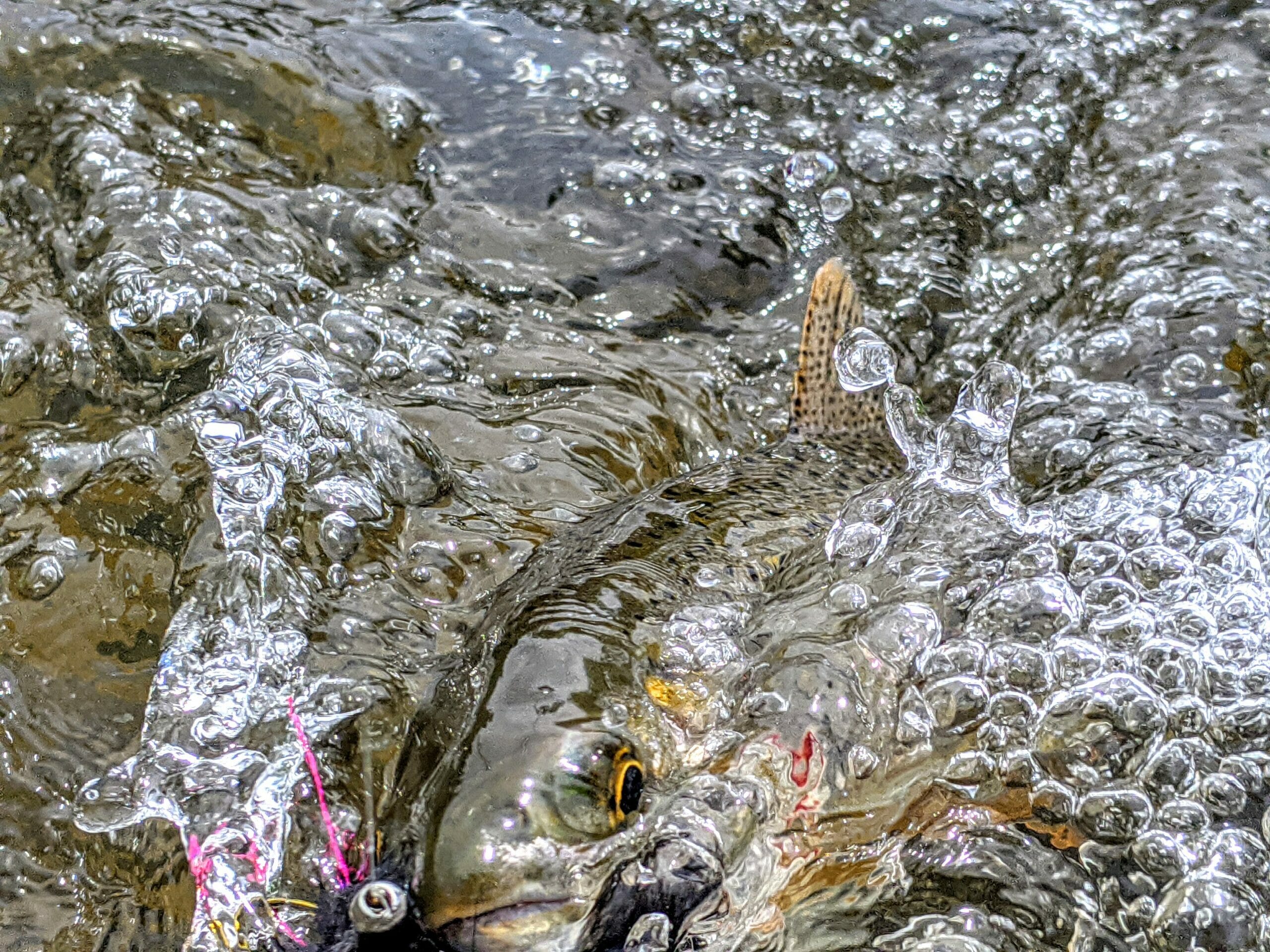When water temperatures approach the mid-60s on your favorite trout stream, it’s time for a back-up plan. Chris Hunt photo.
The calendar said it was June 18. Not even summer yet. But we hit the mid-90s two weeks earlier and the heat hadn’t really let up. Sure, you could get away from it up high in the timber, but even then, on bone dry-days in the woods, when the thermometer is firmly stuck in the 80s, it feels hot.
I’d trundled down a lonely dirt road just a few miles southwest of Idaho’s boundary with Yellowstone National Park toward one of my favorite summer fisheries — a crystal clear and perfectly cold trout stream that tumbles off the Pitchstone Plateau. It’s one of the few places around these parts where an angler can catch the Rocky Mountain Slam — a brook trout, rainbow trout, brown trout and cutthroat trout — in the same stretch of water. The little creek connects to bigger water down low, and when it gets hot, sometimes the big-water trout wander up this smaller stream to escape the heat.
I geared up on the tailgate, slapping mosquitoes as I threaded fly line through rod guides and tied a Stimulator to my tippet. Farther downstream, on the Henry’s Fork, the stonefly hatch had come and gone, but higher up in the drainage, the big bugs were crawling out of the creeks — I counted four lifting off from the willows in the time it took me to rig up and slap just as many mosquitoes on my shins.
And the little creek looked prime. Pumping with water straight out the park, it was clear and full of great trout structure. Downed wood, deep pools and long, rocky runs with deep undercut banks. It’s one of my favorite streams for a reason.
This was going to be fun.
And then I stepped into the water below the first inviting riffle, and I knew I shouldn’t be there. The water was … tepid. Not icy cold, like a trout stream in the Idaho high country should be in mid-June. Not bone-chilling cold. It was … swimmable. But I wasn’t there to go swimming.
And then I stepped into the water below the first inviting riffle, and I knew I shouldn’t be there. The water was … tepid. Not icy cold, like a trout stream in the Idaho high country should be in mid-June. Not bone-chilling cold. It was … swimmable. But I wasn’t there to go swimming.
I dipped my thermometer into the drink and let the clear water run over it for a good 30 seconds. Lifting it out of the water, I took a reading. The red line extended much farther than it should have, especially in this creek, and especially in June. It read a terrifying 64 degrees.
I toyed with the idea of making a few casts, but my heart wasn’t in it. In fact, my heart was slowly breaking. If this out-of-the-way trout stream, well up into the dark timber and shaded much of the day by the canyon it has carved over thousands of years, was too warm to fish on June 18, this summer might be over before it starts.
Trout start to feel stress from the heat when the water warms into the mid-60s. For most trout, when temperatures hit 70 degrees, any added stress can kill them. With the thermometer at 64, and with the sun still several hours from dipping behind the spruces and the firs, this trout stream wasn’t going to get any cooler.
I reeled up what little line I’d pulled off the spool and hopped back into the truck. I looked at the vehicle’s thermometer. It flashed a menacing digital 84 degrees.
I’ve been working in the conservation arena for 16 years. The warning calls from scientists about the perils of climate change and the threats it poses to trout were clear and lucid for years before that, and they’ve continued to mount as the impacts become more and more experiential to everyday anglers like me. This wasn’t the first time I’d been forced to change my fishing plans thanks to warm water. But it marked the first time I had to go to Plan B before the summer solstice.
And I don’t think it’ll be the last time in the weeks ahead. If you don’t have a Plan B of your own this summer, make one. Lots of trout streams across the country are going to be too warm to safely fish, and we shouldn’t force the issue. Find colder water if you can, and if you can’t, find other species to chase until the weather breaks and our trout waters cool off.
And if you’re interested in acting on climate change rather than just reacting, here’s how to do it. The next generation of trout anglers depends on it.



